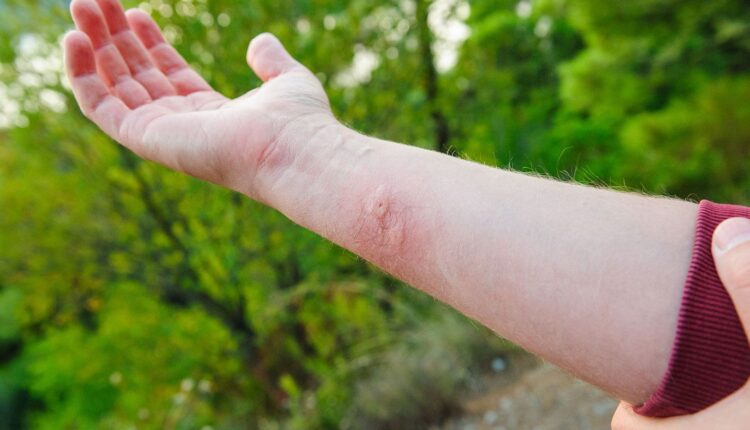Nearly everybody is sensitive to or somewhat allergic to insect stings. As the body responds to the chemicals in the insect’s venom, most individuals suffer inflammation, itching, and redness at the sting site. Although these common reactions can be unpleasant, they are not life-threatening. Nonetheless, for many other men, women, and kids, mild to severe duluth stinging insect allergy can threaten their overall well-being. Continue reading to learn about the insects that are likely to cause insect allergies.
Honey Bees
Honeybees are the most prevalent of all stinging insects. These insects are not aggressive and will only sting if you provoke them. You can easily recognize honeybees by their hairy bodies and vibrant black or yellow markings, often found around clover and flowers. After stinging, honeybees die but leave behind their stinger.
If you have not sustained a bee sting before, you will probably not develop allergic reactions to the stinger’s venom. However, repeated stings could cause skin rashes, itchiness, or swelling.
Fire Ants
Fire ants are often found in the southeastern United States and will not attack you unless you tread on their nests. These stings induce swelling, itchiness, and severe burning, sometimes developing into blisters.
Fire ants can bite into your skin and, whilst the jaw and head remain immobile, rapidly move their rear stinger and abdomen in a wide arc, continuously stinging in a circle. Alternately, these insects can leave behind a line of stings as it moves across your leg.
Yellow Jackets
Yellow jackets are the most aggressive stinging insect. These insects are slightly smaller than bees and have black and yellow markings on their body and head. This coloring makes most people mistake yellow jackets for bees, especially because they love hovering around garbage, and exposed foods, especially those with sugar. Yellow jackets will often sting you repeatedly, causing swelling, redness, and discomfort on the skin.
Wasp
Wasps are hairless insects with tiny “waists” that separate their long, slender lower bodies from their thorax. Wasps can be brown, red, or black and will likely nest under the rafters and eaves of structures. While not as aggressive as yellow jackets, wasps have a painful sting.
Most wasp stings are not particularly dangerous, but you can develop reactions like hives if you are allergic to the sting’s venom. The severity of these allergic reactions differs from one person to another, which means some people will only experience mild symptoms. Nonetheless, a wasp sting can also cause a minor decrease in blood pressure, prompting light dizziness.
Hornets
Hornets resemble wasps but with generally fuller and rounder bodies. These insects often nest in bushes or trees. Unlike bees, hornets keep their stingers and can even sting repeatedly. The discomfort of a hornet sting occurs almost immediately and can last for hours. Other notable symptoms include skin redness and inflammation around the sting.
Mosquito
If you notice swelling about 8 hours after your mosquito bite, you might have skeeter syndrome. Skeeter syndrome is an allergic response to mosquito bites triggered by mosquito saliva. Some individuals experience excessive edema can, which causes moving difficulties.
While it is quite rare, skeeter syndrome can affect anybody. Nonetheless, it frequently affects kids, the elderly, and others with underdeveloped or compromised immunity.
Insect stings are so prevalent that nearly everybody will experience them at some point. Often, these stings cause slight discomfort, and some can even go unnoticed until an irritating bump develops on one’s skin. However, if you experience serious allergic reactions, like facial inflammation and problems breathing, you might need immediate help. If over-the-counter and prescription medicines like antihistamines fail to relieve your concerns, your physician can also suggest immunotherapy.


Comments are closed.